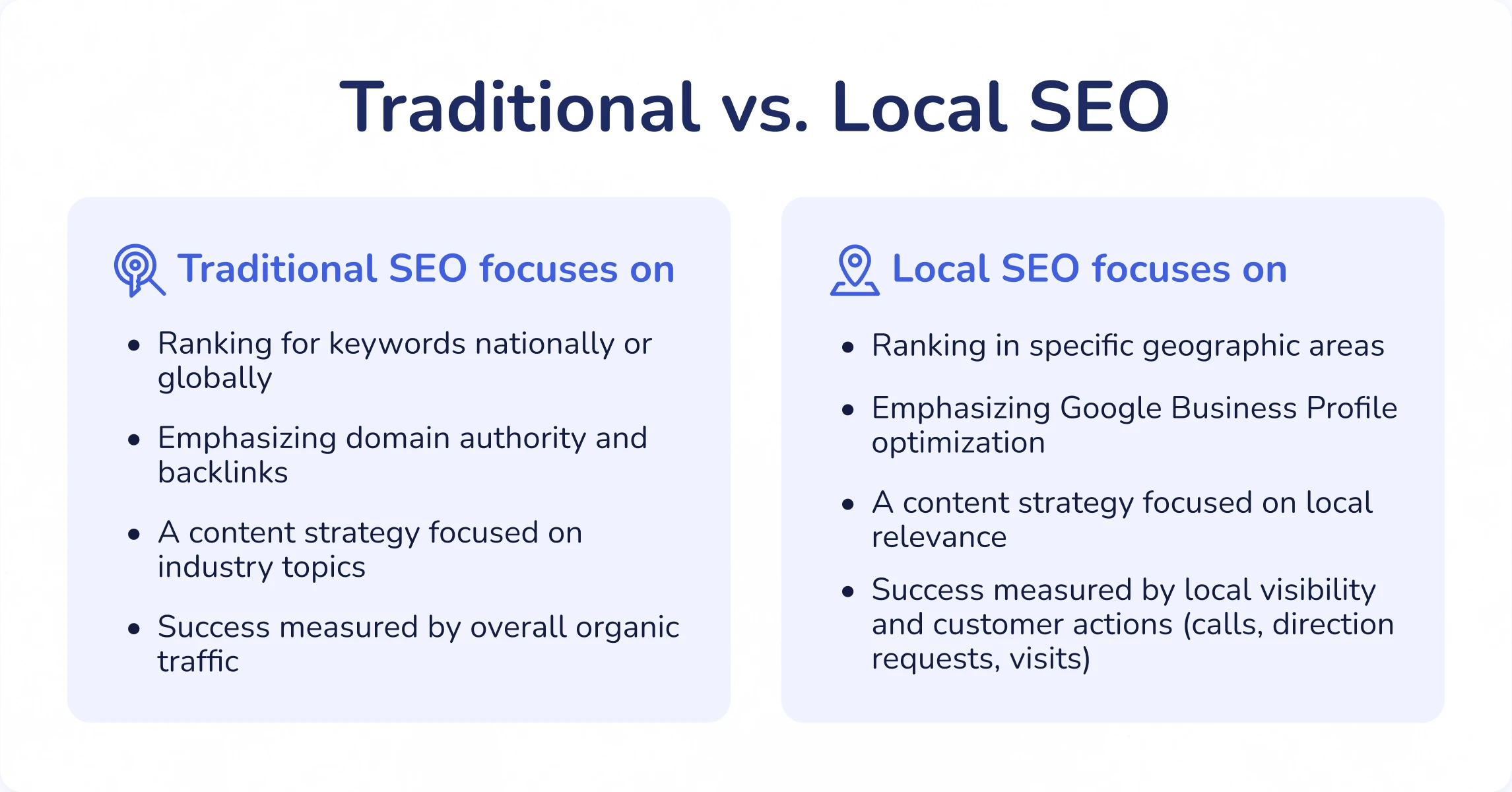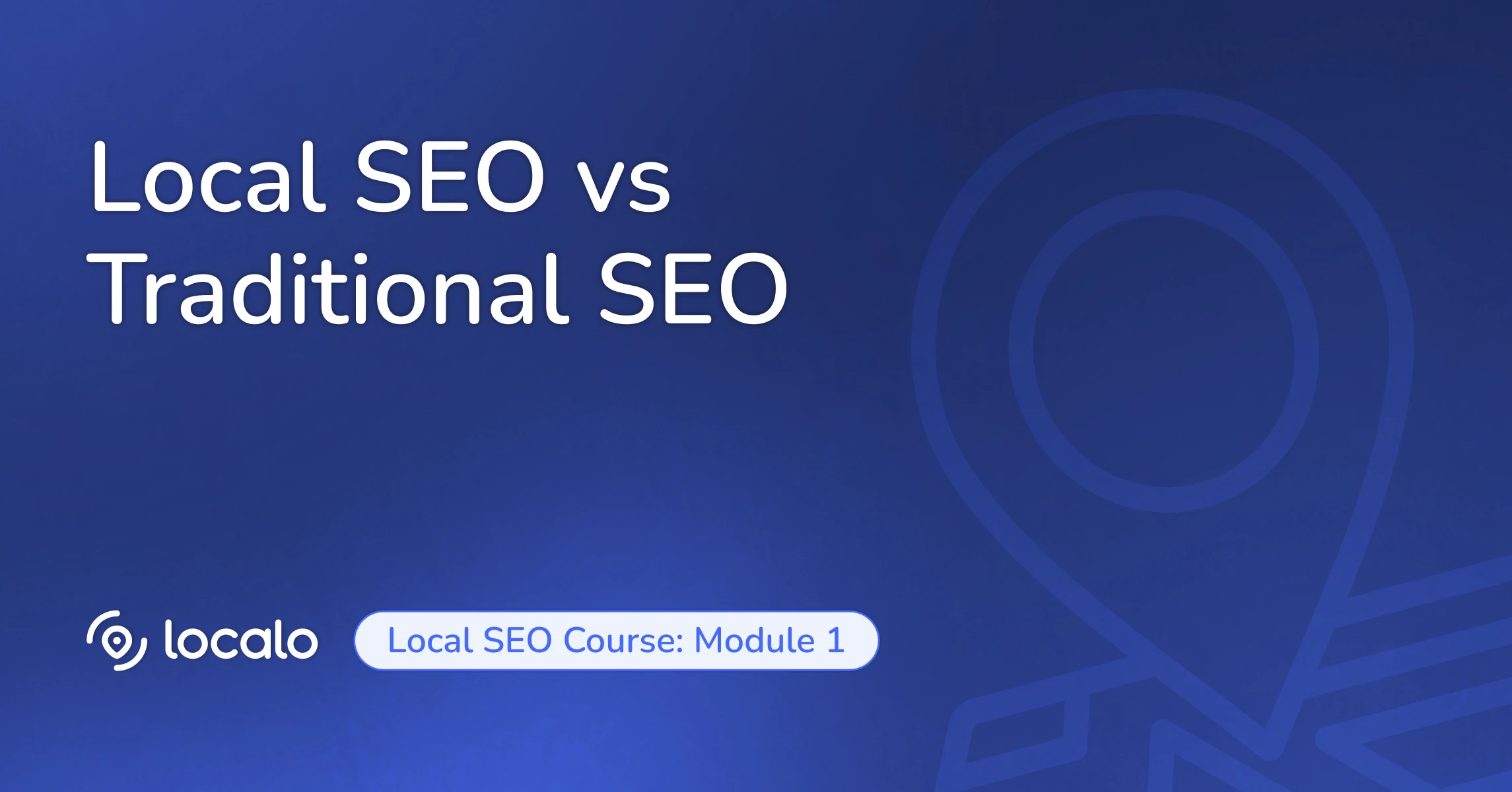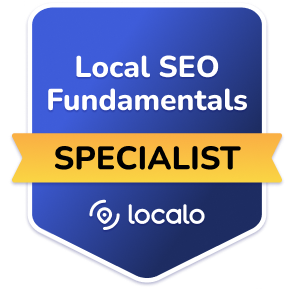Local SEO vs. Traditional SEO
Let’s take a moment to sum it up and understand how local SEO differs from traditional SEO. While they share some common elements, the strategies and focus areas can be quite different:
Traditional SEO focuses on:
- Ranking for keywords nationally or globally
- Emphasizing domain authority and backlinks
- A content strategy focused on industry topics
- Success measured by overall organic traffic
While local SEO focuses on:
- Ranking in specific geographic areas
- Emphasizing Google Business Profile optimization
- A content strategy focused on local relevance
- Success measured by local visibility and customer actions (calls, direction requests, visits)

Think of local and traditional SEO as two sides of the same coin. While traditional SEO builds your overall online authority and visibility, local SEO ensures you’re found by the right people at the right time and place. Together, they create a comprehensive digital presence that’s greater than the sum of its parts.
When these efforts align, something interesting happens. Your authoritative content about artisanal baking (traditional SEO) helps establish your expertise, which, in turn, makes your local listings more credible. Meanwhile, your strong local presence and positive reviews (local SEO) contribute to your overall domain authority and trustworthiness.
The customer journey often weaves between both types of SEO. Someone might:
- First discover your blog post about sourdough techniques (traditional SEO)
- Then search for “artisanal bakery near me” (local SEO)
- Check your business hours and reviews (local SEO)
- Read more of your expert content about bread making (traditional SEO)
- Finally visit your store after seeing your local listing (local SEO)
Modern search engines are sophisticated enough to understand the relationship between your local presence and overall authority. When both aspects of your SEO strategy support each other, you create a stronger, more resilient online presence that captures all types of relevant searches.
Welcome back to Localo Complete SEO Course! In today’s lesson, we’ll compare local SEO with traditional SEO and see how they work together to create a comprehensive online presence. Understanding the relationship between these two approaches will help you develop a more effective overall strategy.
What are the key differences in focus and strategy?
Traditional SEO focuses on building your visibility across the entire internet. It’s about ranking well for industry keywords no matter where the searcher is located, building your website’s overall authority through quality backlinks, creating content that establishes you as an expert in your field, and measuring success by how much traffic your site attracts overall.
Local SEO, on the other hand, is much more targeted. It’s about being visible specifically to people in your geographic area, making your Google Business Profile the centerpiece of your optimization efforts, creating content that speaks directly to the needs and interests of your local community, and measuring success not just by visibility but by real customer actions – phone calls, direction requests, and actual visits to your business.
Think of traditional SEO as casting a wide net across the internet, while local SEO is like fishing in a specific pond where you know your customers are swimming.
How do local and traditional SEO complement each other?
When these efforts align, something interesting happens. Your authoritative content about artisanal baking techniques through traditional SEO helps establish your expertise, which, in turn, makes your local listings more credible. Meanwhile, your strong local presence and positive reviews built through local SEO contribute to your overall domain authority and trustworthiness.
Together, they create a comprehensive digital presence that’s greater than the sum of its parts. Modern search engines are sophisticated enough to understand the relationship between your local presence and overall authority. When both aspects of your SEO strategy support each other, you create a stronger, more resilient online presence that captures all types of relevant searches.
What does the customer journey look like across both strategies?
The customer journey often weaves between both types of SEO in a fascinating way. Let me walk you through a real-world example.
Imagine a customer’s complete journey to your business. It might begin when they discover your expert blog post about sourdough baking techniques – that’s traditional SEO bringing them to you through informational content that ranks nationally.
A week later, when they’re ready to buy fresh bread, they search “artisanal bakery near me” – now local SEO takes over, helping your business appear in local results close to their location.
Next, they check your business hours and read your reviews directly from your Google Business Profile – again, that’s local SEO helping them evaluate your business.
Before making the trip, they visit your website again to read more of your expert content about bread-making, perhaps your guide to different sourdough varieties – traditional SEO once more providing value through informational content.
Finally, they click for directions from your local listing and visit your store to make a purchase – the local SEO component completing the journey from online discovery to physical visit.
This interconnected path shows why focusing only on one type of SEO limits your visibility. Different aspects of your digital presence support customers at different stages of their decision journey. By investing in both traditional and local SEO, you create multiple entry points and a seamless path for customers to find and choose your business.
How do you measure success in local SEO?
Success in local SEO is measured differently than traditional SEO. Instead of just tracking organic traffic and keyword rankings, you’ll want to monitor:
- Local pack rankings for key service + location terms
- Google Business Profile insights (views, actions, direction requests)
- Phone calls from local search results
- Direction requests and foot traffic attributed to local search
- Conversion rates from local traffic sources
These metrics focus on actions rather than just visibility, giving you a clearer picture of how your local SEO efforts translate into actual business results.
In our next lesson, we’ll review the key takeaways from this module and provide you with a practical exercise to apply what you’ve learned. Thank you for joining me today, and I’ll see you in the next video!
The websites and Google Business Profiles used throughout the course are for educational purposes only. We're not affiliated with these businesses and don't claim any endorsement from them. All trademarks belong to their owners. Some examples include visual changes (made with browser tools) to help illustrate the SEO concepts we're teaching. These edits are strictly local and illustrative of specific SEO concepts. They don't affect the original websites.




